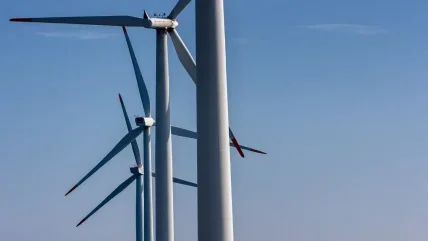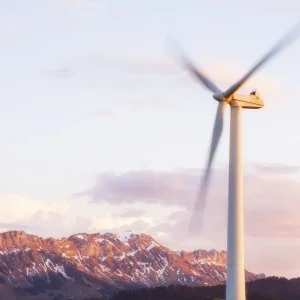
In the age of information, the wind technology industry is not immune to the pervasive issue of misinformation and disinformation. These phenomena, while often used interchangeably, have distinct definitions. Misinformation refers to false or misleading information spread unintentionally, whereas disinformation involves the deliberate dissemination of false information with the intent to deceive. Both can have significant impacts on public perception, policy-making, and the industry’s growth. This article explores how misinformation and disinformation manifest in the wind technology sector, their potential consequences, and strategies for combating these challenges.
The Rise of Wind Technology
The global shift towards renewable energy sources has positioned wind technology as a cornerstone of sustainable development. According to the Global Wind Energy Council (GWEC), the total installed wind power capacity reached 743 GW by the end of 2020, with projections suggesting continued robust growth. However, the industry’s expansion is not without its hurdles, chief among them being the spread of misinformation and disinformation.
Common Myths and Misconceptions
Myth 1: Wind Turbines Cause Health Issues
One of the most pervasive myths is that wind turbines cause adverse health effects, often referred to as “wind turbine syndrome.” Claims range from headaches and dizziness to more severe ailments. However, numerous studies, including those by the World Health Organization and various national health agencies, have found no conclusive evidence linking wind turbines to health problems. While the noise and visual impact of turbines can cause annoyance for some individuals, the assertion that they pose a direct health risk is unfounded.
Myth 2: Wind Energy is Inefficient and Unreliable
Critics often argue that wind energy is unreliable due to its dependency on weather conditions. While it is true that wind is intermittent, advancements in technology and grid management have significantly improved the reliability of wind power. Modern wind turbines are highly efficient, and the integration of wind energy into diversified energy portfolios ensures stability. Additionally, energy storage solutions and smart grid technologies are mitigating the intermittency issue, making wind a viable and dependable energy source.
Myth 3: Wind Turbines Have a Negative Impact on Wildlife
Concerns about the impact of wind turbines on wildlife, particularly birds and bats, are often cited as reasons against their development. While it is true that some turbines can affect local wildlife, the industry is actively working to minimise these impacts. Research and technology are being deployed to design bird-friendly turbines, and strategic siting practices help avoid critical habitats. The overall environmental benefits of wind energy, including its role in reducing climate change, which poses a far greater threat to wildlife, outweigh these concerns.
The Role of Disinformation Campaigns
Disinformation campaigns are often driven by vested interests seeking to undermine the wind technology sector. These can include fossil fuel companies, political groups, or other entities that perceive renewable energy as a threat. Tactics used in these campaigns include the dissemination of false studies, misleading statistics, and the amplification of isolated incidents to suggest broader trends.
Case Study: Social Media Influence
Social media platforms have become significant battlegrounds for disinformation. A notable example is the spread of false information about wind turbines causing widespread bird fatalities. Viral posts, often accompanied by doctored images or taken out of context, can mislead the public and influence opinion. Research by the Massachusetts Institute of Technology (MIT) found that false news spreads more rapidly than true news on social media, highlighting the challenge of combating disinformation in the digital age.
Impact on Policy and Public Perception
Misinformation and disinformation can shape public opinion and, consequently, policy decisions. Politicians and policymakers, influenced by public sentiment, may enact regulations that hinder the growth of the wind technology industry. For instance, exaggerated claims about health risks or environmental impacts can lead to stricter zoning laws and reduced funding for wind projects. This not only slows down the adoption of renewable energy but also perpetuates reliance on fossil fuels.
Regulatory Response and Industry Advocacy
To counteract misinformation and disinformation, regulatory bodies and industry advocates must take proactive steps. The GWEC and other organisations are already engaging in public education campaigns to dispel myths and provide accurate information about wind energy. Additionally, collaboration with social media platforms to identify and flag false information can help curb its spread.
Combating Misinformation and Disinformation
Strengthening Public Education
One of the most effective ways to combat misinformation and disinformation is through public education. Providing clear, accessible, and factual information about wind technology can help demystify the industry and build public trust. Educational programmes in schools, community workshops, and informative websites are crucial tools in this effort.
Leveraging Technology and Research
The wind technology industry can utilise advancements in technology and research to address concerns and debunk myths. For example, continuous monitoring of wildlife interactions with turbines and publishing transparent findings can reassure the public and policymakers. Additionally, leveraging big data and artificial intelligence to optimise wind farm performance and reliability can counter arguments about inefficiency and unreliability.
Engaging with the Media
The media plays a critical role in shaping public perception. Engaging with journalists and providing them with accurate, science-based information can help ensure balanced and informed reporting. Press releases, media kits, and expert interviews are effective ways to communicate the benefits and realities of wind technology.
Policy Advocacy
Industry stakeholders must engage in policy advocacy to ensure that regulations are based on accurate information and scientific evidence. This involves working closely with policymakers, providing them with reliable data, and debunking myths that may influence legislative decisions. Policy advocacy also includes pushing for stronger regulations against disinformation and promoting transparency in funding sources for anti-wind campaigns.
The Role of Transparency
Transparency is a key component in building trust and combating misinformation. The wind technology industry should adopt transparent practices in all aspects of its operations. This includes clear communication about the environmental and economic benefits of wind energy, as well as honest discussions about its challenges and limitations.
Corporate Responsibility
Companies in the wind technology sector should commit to transparency in their communications and operations. This includes openly sharing information about project impacts, both positive and negative, and engaging with local communities to address their concerns. Corporate responsibility also involves ethical advertising and avoiding overstatements about the capabilities of wind technology.
Independent Audits and Certifications
Independent audits and certifications can enhance credibility and counter disinformation. Certifications from reputable organisations, such as the International Organization for Standardization (ISO), can assure stakeholders that wind projects meet high standards of quality and sustainability. Independent environmental impact assessments can also provide unbiased data to address concerns about wildlife and ecosystem effects.
Conclusion
Misinformation and disinformation present significant challenges to the wind technology industry, but they are not insurmountable. Through proactive public education, leveraging technology, engaging with the media, and advocating for informed policy decisions, the industry can counteract false narratives and build public trust. Transparency and corporate responsibility are foundational to these efforts, ensuring that the benefits of wind energy are realised while addressing genuine concerns. As the world continues its transition to renewable energy, combating misinformation and disinformation will be crucial to the sustainable growth of the wind technology sector.






